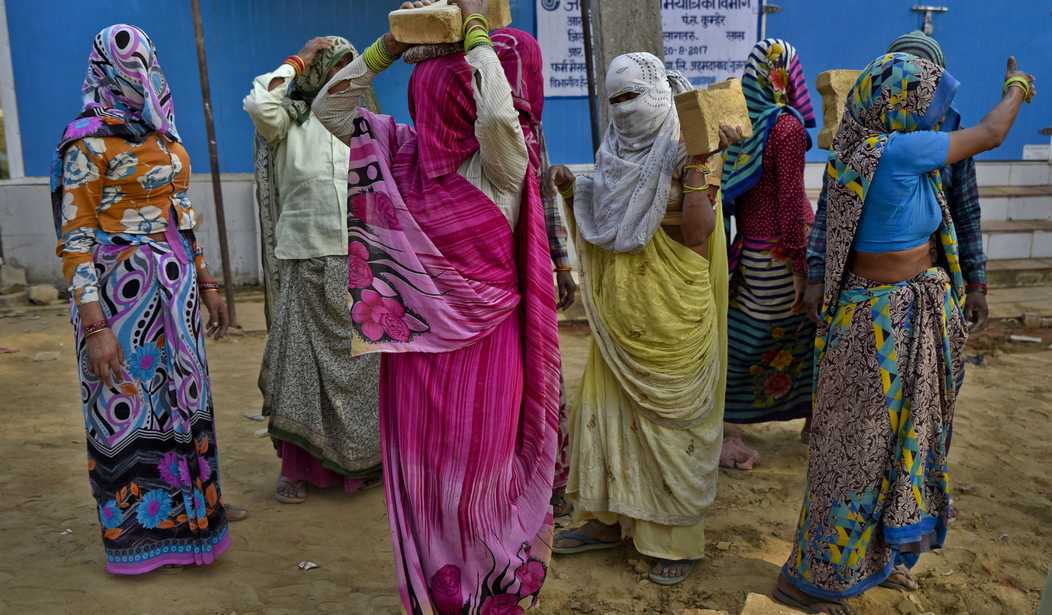I’ve seen a lot of weak arguments in favor of gun control recently, but this one trumps them all. At the Telegraph newspaper in India, writer Nitin Sangwan makes the astounding claim that India’s history of keeping people disarmed offers a lesson for the United States.
Unlike the US where the Constitution gives citizens the right to own a gun, in India gun ownership is a difficult proposition. Consequently, while the US has 120 guns per 100 persons, the figure is merely 5 per 100 persons in India. Furthermore, only a limited class of weapons is permitted for individual ownership here. One of the fallouts of such a provision is that an American citizen is 12 times more likely to be killed by a gun than an Indian.
The situation in India can be traced back to a colonial gun control legislation, the Indian Arms Act of 1878, which prohibited Indians, but not Europeans, from possessing, manufacturing and selling arms without license. The original intention of the colonial rulers was to discourage arms ownership in the background of the 1857 Revolt to prevent the recurrence of a similar event. At that time, Indians had vehemently opposed the legislation for its discriminatory nature, but the law proved to be a blessing in disguise over the years as strict regulations on access restricted the supply of guns and reduced gun-related deaths.
“We were prevented from owning guns and it turned out okay for us” is a really strange argument to make, isn’t it? It is true that India’s homicide rate is lower than that of the United States (3.2 homicides per 100,000 people in India compared to 5.4 homicides per 100,000 people in the United States), but those strict regulations in India haven’t prevented a terror attack that left 166 people dead. India is routinely named as the most dangerous nation for women, and preventing women from being able to defend themselves with a firearm surely doesn’t help. The United States doesn’t have 8,000 “dowry deaths” of women every year, but India does.
And if India’s lower homicide rate is an argument against the 2nd Amendment, I think the fact that the United States declared independence from Great Britain in 1776 and India had to wait until 1947 is an argument in favor of the right of the people to keep and bear arms. Personally, I think there’s a place for both Gandhi and George Washington in the pantheon of great leaders, but India’s subjugation to the British Empire continued for nearly two centuries after the United States declared independence, in large part because the American colonists fighting for freedom had the ability to effectively do so.
Sangwan glosses over the imposition of a ban on gun ownership for Indians in 1878, as well as the Revolt of 1857 that prompted it, but this painful history shouldn’t be ignored. At least one scholar claims ten million natives were killed by the British in their efforts to put down the revolt and stamp out resistance in the years after. Gandhi himself called the passage of the Arms Act of 1878 the “blackest” misdeed of British rule in India, not because Gandhi was a big believer in the individual right to keep and bear arms, but because he was a believer in self-determination and he knew that keeping the people of India from owning firearms was the most fundamental of oppressions inflicted by the colonial power of Great Britain.
Now, the author does at least acknowledge that despite India’s near total ban on gun possession, there are still plenty of criminals with guns and a thriving black market. It’s just that, according to Sangwan, that doesn’t really matter.
The detractors of strict gun laws in India often raise the point that such rigorous regulations reflect the mistrust of the government in its citizens. Critics also argue that such tight laws have resulted in the creation of a parallel, illegal industry in guns. It is true that Etah, Aliganj and Farrukhabad are infamous centres for the production of illegal guns. But empirical evidence suggests that even these centres of production are in decline.
The law of averages suggests that higher the number of gun-toting individuals roaming the streets, greater are the chances of accidents and mass shootings taking place. This is simply because not every gun-owner is capable of handling weapons in a mature manner. Every society is thus confronted with two choices: to arm citizens against threats, real and imagined, or jeopardize the safety of the same citizens by adopting a lax approach towards the regulation of guns.
According to statistics, a woman is burned alive every 90 minutes in India, one of the thousands of “bride burning” incidents that take place across the country when a family refuses to pay enough money in a dowry to the woman’s new husband. If Sangwan wants to show his concern for the safety of India’s citizens, perhaps he should be calling for a ban on matches and kerosene in India, and not a ban on guns in the United States. Better yet, he should call for the right of armed self-defense, and start working to grow gun ownership among women in India. After all, #SelfDefenseIsAHumanRight.









Join the conversation as a VIP Member